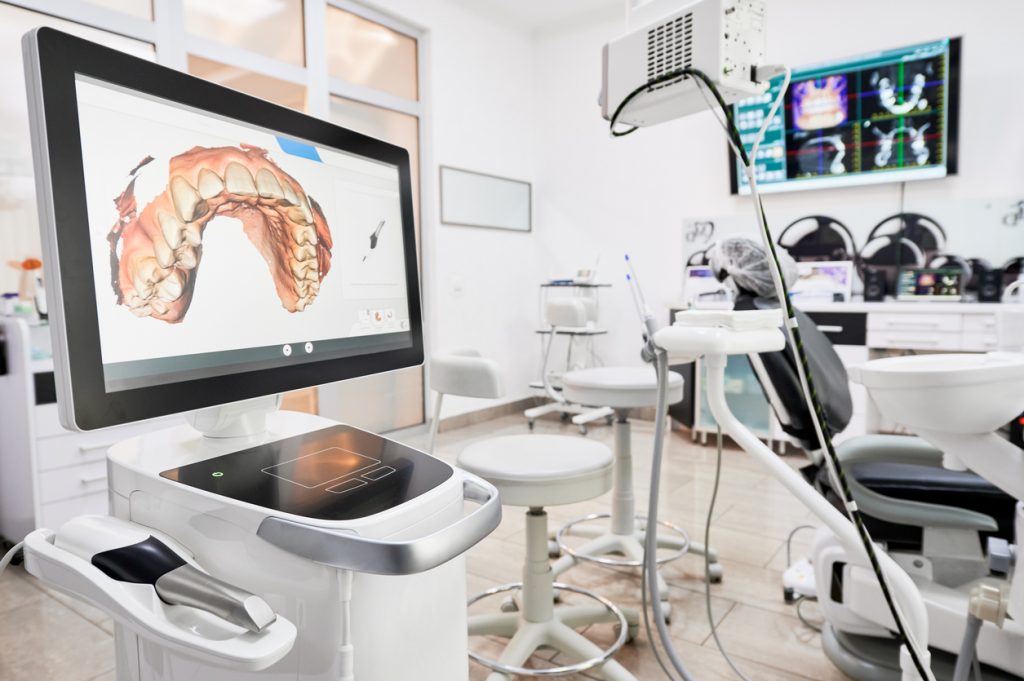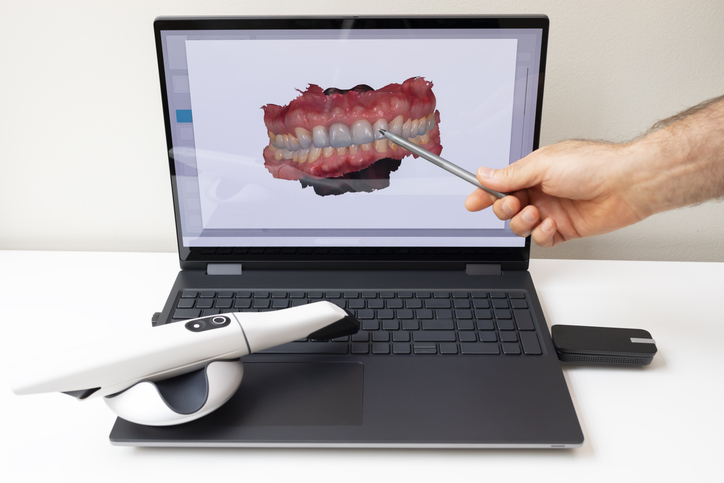
Dental technology has made huge leaps in recent years, and one of the most exciting advancements in dentistry is the use of dental scanners. These devices have revolutionized how dentists like Dr. Scharf plan and place dental implants, making the entire process more precise, efficient, and comfortable for patients.
But what exactly is a dental scanner, and how does it make such a difference in dental implant procedures? Let’s dive into how these high-tech tools work and why Dr. Scharf relies on them to ensure the best outcomes for his patients.
What Is a Dental Scanner?
A dental scanner is a device used to capture detailed images of a patient’s teeth, gums, and jaw. Unlike traditional impressions, which involve biting down on a tray filled with a gooey material, digital dental scanners offer a far more comfortable experience. They use optical technology to create a 3D image of the mouth, providing an incredibly accurate representation of the patient’s oral structure.
The process is quick and painless. Dr. Scharf or a member of his team will pass a small handheld device (the scanner) over your teeth. The scanner captures thousands of images per second, instantly creating a digital model that can be viewed and manipulated on a computer screen.
The resulting image is a detailed map of your mouth that shows every contour, nook, and cranny. This is especially important when planning for dental implants, where precision is key to ensuring a perfect fit.

How Dental Scanners Work
To understand how dental scanners work, it’s important to know that there are two main types: optical scanners and cone-beam CT scanners. Both types create 3D images but do so in different ways.
Optical Scanners
Optical scanners use light to capture a 3D image. These scanners project a light source onto the teeth and gums, and the device records the way light bounces off the surfaces. Specialized software processes the data and creates a highly accurate 3D model of the patient’s oral anatomy.
Because optical scanners don’t use radiation, they’re completely safe for patients and can be used for a wide variety of dental procedures, including dental implants.
Cone-Beam CT Scanners
While optical scanners are ideal for surface-level imaging, cone-beam CT scanners provide a deeper look. These scanners use X-rays to create a 3D image of not just the teeth and gums but also the underlying bone structure. For dental implants, this type of imaging is critical, as it allows Dr. Scharf to assess bone density, locate nerves, and plan the ideal position for each implant.
A cone-beam CT scanner rotates around the patient’s head, capturing hundreds of images from different angles. These images are then compiled into a single 3D model that shows a complete view of the jaw, teeth, and surrounding structures.
Why Dental Scanners Are So Important for Dental Implants
So why are these high-tech scanners such a big deal when it comes to dental implants? Here are a few key reasons:
Precision Planning
The placement of dental implants requires absolute precision. The implant must be positioned correctly within the jawbone to ensure stability and long-term success. Dental scanners allow Dr. Scharf to create a detailed treatment plan before the procedure begins, ensuring that the implant is placed in the optimal location.
With 3D imaging, Dr. Scharf can analyze the exact shape and size of your jawbone, assess bone density, and determine the perfect angle for the implant. This minimizes the risk of complications and improves the overall success rate of the procedure.
Customization
Every patient’s mouth is unique, and dental implants need to be customized to fit perfectly. Dental scanners provide a digital impression that is far more accurate than traditional molds, allowing for implants and crowns to be designed to fit your mouth perfectly.
By using the 3D model created by the scanner, Dr. Scharf can ensure that the final restoration looks natural, feels comfortable, and functions just like a real tooth.
Reduced Surgery Time
Because dental scanners provide so much information upfront, Dr. Scharf can plan every detail of the procedure in advance. This means the actual surgery can be completed more quickly and efficiently. Instead of having to make adjustments on the fly, everything is mapped out beforehand, reducing the time you spend in the dental chair.
Less Invasive Procedures
In some cases, dental scanners can eliminate the need for more invasive diagnostic procedures. For example, with traditional dental implants, exploratory surgery might be needed to assess the condition of the jawbone. But with a cone-beam CT scan, Dr. Scharf can see everything he needs to know without making a single incision.
This leads to faster recovery times and less discomfort for the patient.
Improved Communication
One of the most underrated benefits of dental scanners is how they improve communication between the dentist and the patient. When you can see a detailed 3D model of your mouth on the screen, it’s easier to understand what’s going on. Dr. Scharf can walk you through the entire procedure, showing you exactly where the implant will go and how the final result will look.
This level of transparency helps patients feel more informed and confident about their treatment.
The Role of Dental Scanners in Guided Implant Surgery
Another exciting use of dental scanners is in guided implant surgery. In this approach, the 3D scan is used to create a surgical guide that helps Dr. Scharf place the implant with extreme accuracy. The guide fits over the patient’s teeth like a mouthguard, with pre-made holes that indicate the exact location and angle where the implant should be placed.
This method ensures that the implant is positioned perfectly every time, reducing the risk of errors and improving the overall success rate of the surgery.
A Glimpse Into the Future of Dentistry
Dental scanners are just one example of how technology is transforming dentistry. As these devices become even more advanced, we can expect to see further improvements in dental implant procedures, making them faster, more precise, and even more comfortable for patients.
For Dr. Scharf and his team, dental scanners have become an indispensable tool for providing the highest level of care. By using the latest technology, they’re able to offer patients a better overall experience and results that last a lifetime.
Final Thoughts
Dental scanners may seem like small handheld devices, but the impact they have on dental care is enormous. Whether you’re planning for dental implants or simply want a more comfortable dental experience, these tools are changing the game. Dr. Scharf’s use of dental scanners ensures that every implant is placed with precision, providing patients with beautiful, functional smiles that they can be proud of.
If you’re considering dental implants or have questions about the process, don’t hesitate to reach out to Dr. Scharf’s office. With the help of cutting-edge technology, your dental care is in great hands.

Get Precision Placement Dental Implants with Dr. David Scharf in Long Island, NY
Dental implants last longer when they are placed correctly and maintained properly. Our digital scanners help us fit you perfectly with a smile that will last.

